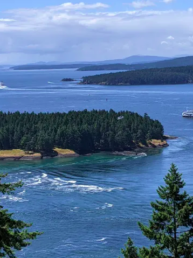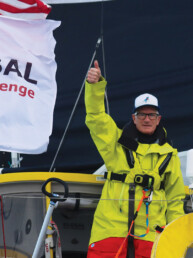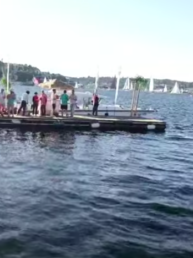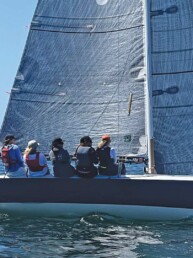Lessons Learned Cruising
From the February 2021 issue of 48° North.
Sailboats! Most of our cruising boats come equipped with noisemakers below deck: the so-called “Iron Genny” comes into service at times when it’s impossible or impractical for our real genny (or one of the other flappy white things) to harness the wind and move our boats. Engines are a piece of gear that may not be literally essential on a sailboat, but for most cruisers they are a practical essential — as such, it’s one many sailors love to hate.
When we were looking for a boat to be our magic carpet for family cruising, the condition of the engine was an important criterion. Jamie is a sailmaker of many years, by dint of experience he has become a rigger, and he’s generally pretty handy around all things sailing. Even though he’s hands-on and mechanically inclined, marine diesel engines lay solidly outside his comfort zone. In evaluating the pros and cons of different boats, the degree to which their engines could be subject to servicing was a meaningful consideration. One of the reasons Totem was attractive to us was that she had been repowered just five years previously — less likely to have maintenance headaches, we presumed, and more likely to provide service without major issue for our two- to five-year sabbatical.
Inspired by prior generations of cruisers in our own dream, the logs we read weren’t about engines much – Slocum or the Pardeys simply didn’t have them. But you don’t read much about those cruisers going to the spectacular Tuamoto archipelago, or the Maldivian string of pearls in the Indian Ocean. Why? Entering these atolls under sail alone is exceptionally dangerous. So mostly, they didn’t get visited. The reality of contemporary cruising is that we want to visit places and do things that require reliable propulsion. That is, we want to choose where we go without the lack of an engine limiting our plans.
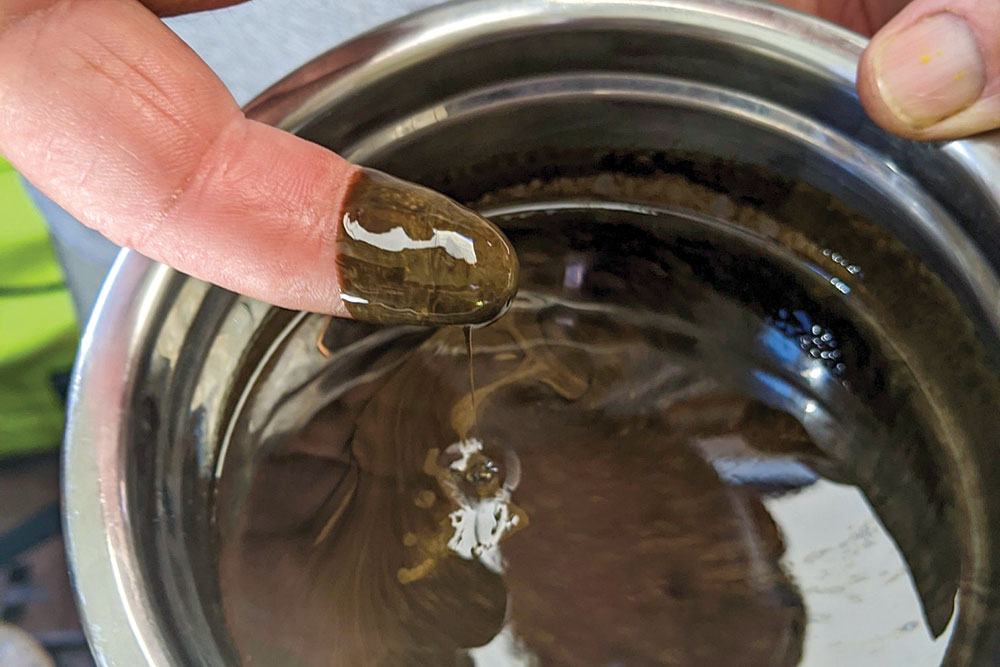
Cruising with an auxiliary diesel creates the need to work on it in remote locations. Over time, our skills have grown. And by ours, I mean Jamie’s, because I’ll readily admit to being the non-mechanical member of our team. (I do manage an oil change every now and then to have some basics.) This hard-won savvy is built on some stressful experiences when we weren’t sure what we’d do in the face of a big problem.
Sailing north from Serangan, Bali, towards the Gili islands off Lombok is an exercise in fighting current with little wind. The Lombok Strait doesn’t offer much on either side for anchorages — it’s all very deep until you hit land. So when our engine sputtered and was unable to compete with 6 knots of current and Totem began sliding towards the rocks off Bali, things were a little tense. Bad fuel had caused fuel filters to clog in hours instead of months. We fortunately found anchoring depth and a fix, but the lesson was clear: it stinks to find yourself without the engine you were counting on.
This was just a few weeks after we towed a sailboat for two days after they’d lost their engine while sailing from Australia to Indonesia. The current carried them towards the islands of Sumba and Flores with tantalizing impossibility. They’d been adrift for weeks, with radio contact and no imminent danger – but, I’ll say it again, adrift for weeks. There’s very little wind in Southeast Asia, and nobody thinks that wallowing in ocean swells is fun.
The following year, we were sailing north in Malaysia from Penang towards Langkawi. This is through the Strait of Malacca, one of the busiest commercial shipping lanes in the world: more than 100,000 ships transit annually. A frontal system surprised us with the force it packed, and within minutes Totem was in whiteout conditions — 60 knots whipped at us, which wasn’t something you could just sail out of. Did I mention the shipping lanes? Having a reliable engine in this situation was essential. It wasn’t long after this we scheduled Yanmar’s recommended 5,000-hour service.
Over time, our confidence in servicing the engine has grown as we built experience. Yet today, our engine has over 8,300 hours, which is a lot. In the last few years we’ve encountered a few problems here and there — all addressed, usually without more pain than premium pricing for parts shipped to tropical islands.
Almost exactly a year ago, we experienced mild overheating while running the engine at anchor to make hot water. Many hours of servicing by Jamie and two diesel mechanics later, no cause was found. In the process of pulling apart and putting back together various elements of the cooling system, the problem went away. But the question lingered: Why? We proceeded north along the coast and through the Sea of Cortez, unhindered (except by Covid-19) until just over a week ago.
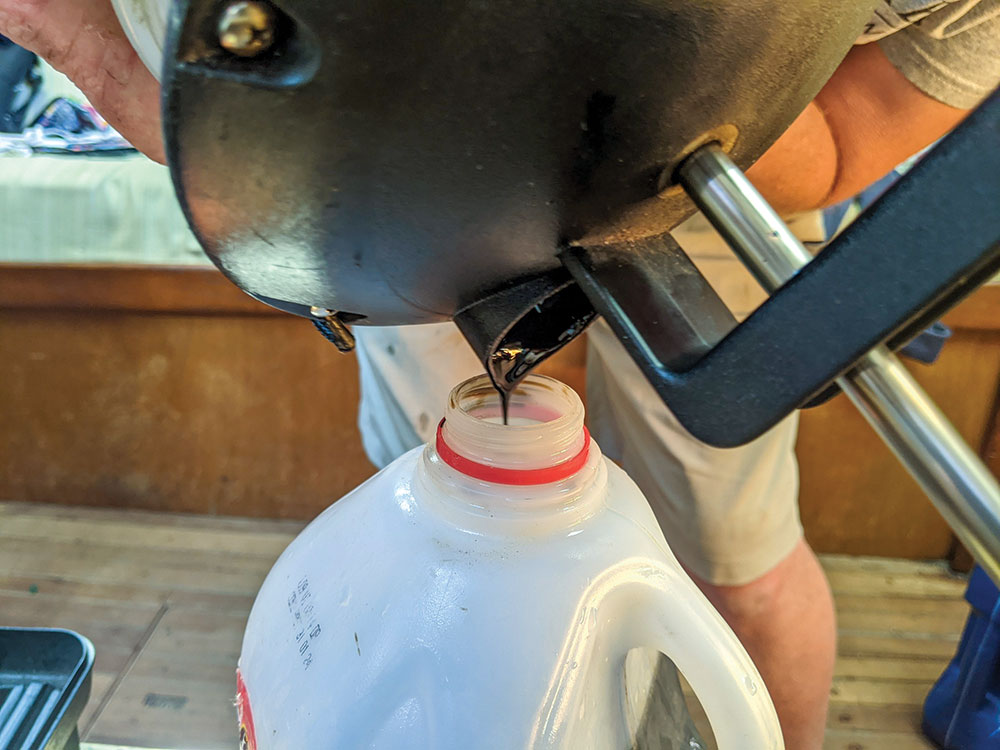
We had arrived at Santa Rosalia, Baja California Sur in the dark hours before dawn and anchored outside until there was light to enter the harbor. As the sun came up, we made routine checks and Jamie noticed there was a lot of oil in the coolant expansion tank. The engine oil dipstick came up clean, with no signs that coolant/freshwater contaminated the oil. But we clearly had a significant problem: A head gasket? Or worse?
The irony is not lost on me that our article published at 48north.com in January talked about the things that wear out on an actively cruised boat, and we noted that our engine has served us well. Oil contaminating coolant at 8,313 hours spells out the need for a thorough assessment. But there aren’t resources here in Santa Rosalia for a compression test. Nor is it the place to remove and resurface the head — open heart surgery for engines, as one friend put it — if we found it warped and the cause of the leak. But we need to identify the cause AND be certain that repairing it gains us a reliable engine for coral-strewn islands in remote corners of the Pacific. At least Covid has slowed down the clock!
Meanwhile, our goal to minimize service needs with a newer engine back in 2007 has played out just as we hoped. We’ve gone far. And hopefully, what our engine needs now is addressable at a level that forestalls repowering; though we can’t know yet. But we know that cruising is about letting go of fixed plans, and taking life one day at a time. And for now, it means a smaller radius to explore for a while.
Behan and Jamie Gifford
Behan and Jamie Gifford set sail from Bainbridge Island in 2008 and are currently aboard Totem in Mexico. Their column for 48° North has traced Lessons Learned Cruising during a circumnavigation with their three children aboard and continued adventures afloat. Follow them at www.sailingtotem.com

